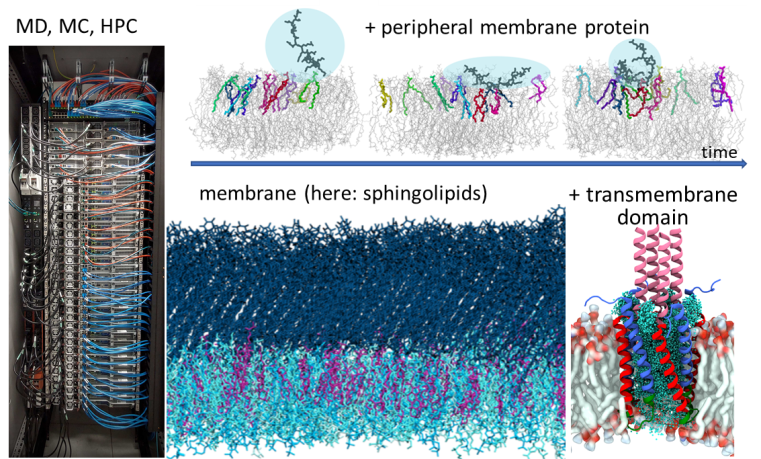
PROJECT A01
The Role of Protein-Lipid Interactions for Protein Segregation in the Yeast Plasma Membrane
Biological membranes consist of a staggering diversity of lipids and proteins that are often laterally segregated into specific domains. Our project aims to elucidate the role of protein-lipid interactions in the patterning of biological membranes. We have previously established that the plasma membrane (PM) of budding yeast organizes into a patchwork of many coexisting domains, and that this segregation is essential for the proper function of membrane proteins. Here, we propose a combination of experimental and numerical approaches to investigate the mechanistic basis for lateral positioning of integral proteins in the yeast PM. Experimentally, we will monitor the impact of protein-lipid interactions on lateral segregation and mobility of isolated transmembrane (TM) segments. We will modulate the lipid composition of the PM using a combination of genetic, pharmacological and physical perturbations. Our experimental observations will then serve as input for lattice models that are built on enthalpic and entropic parameters obtained from coarse grain molecular dynamics (MD) simulations. This approach will allow us to study the large spatial and temporal scales required to represent domain formation in the yeast PM. Predictions from our theoretical simulations will in turn be used to design specific experimental perturbations. Combining experimental and theoretical approaches will allow us to obtain new insights into the fundamental mechanisms underlying self-organization and patterning of biological membranes, which form the basis for all cellular interfaces.



